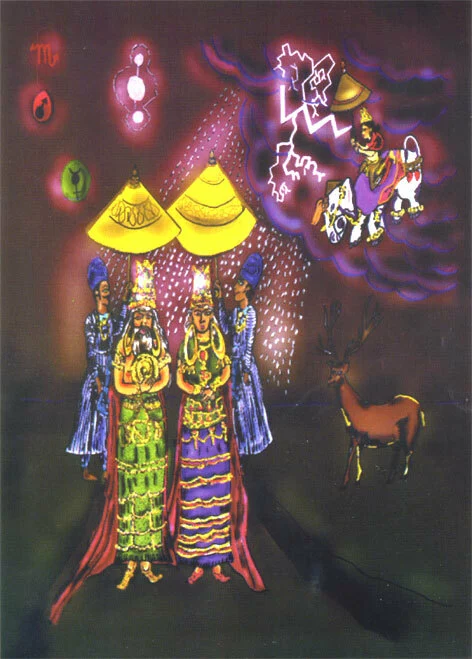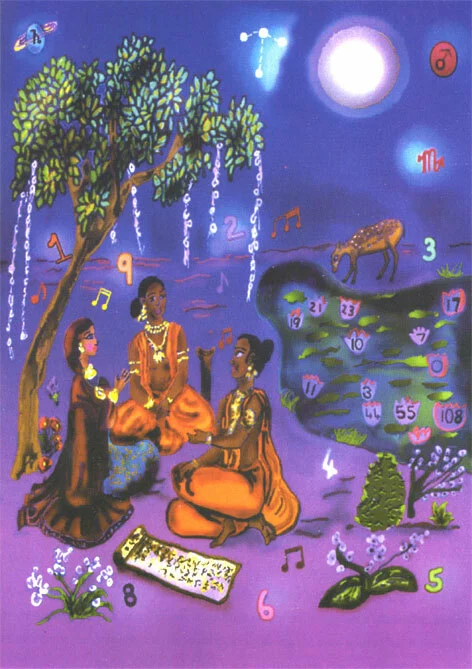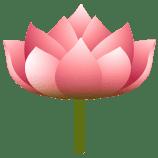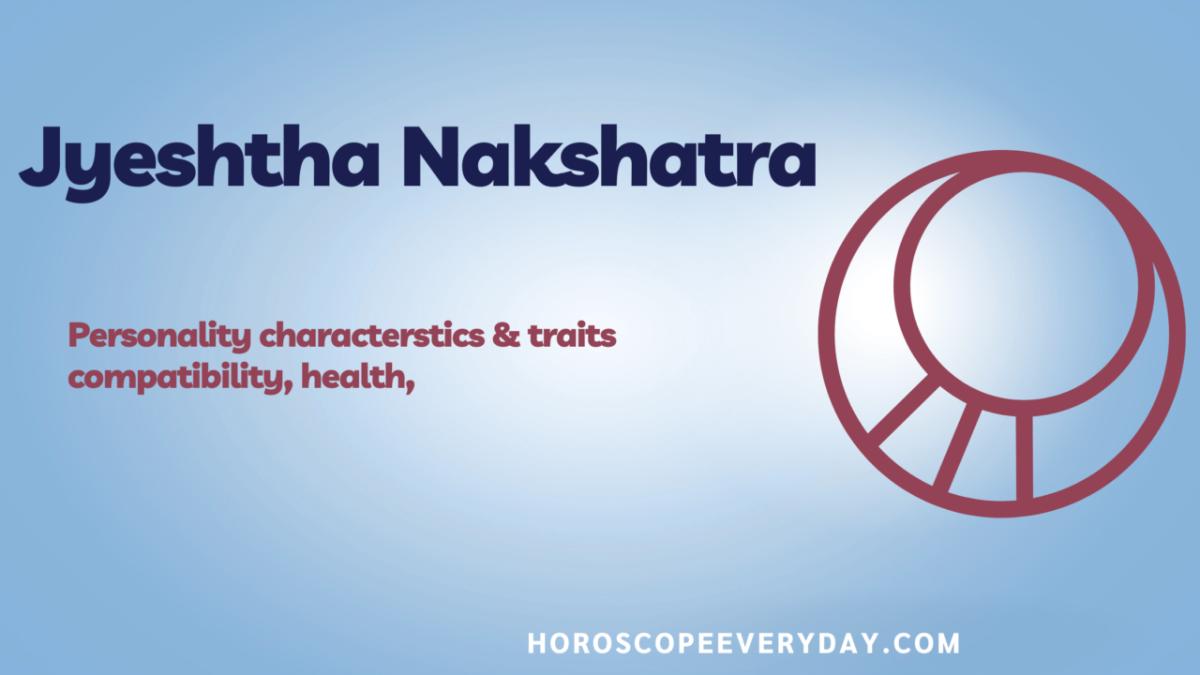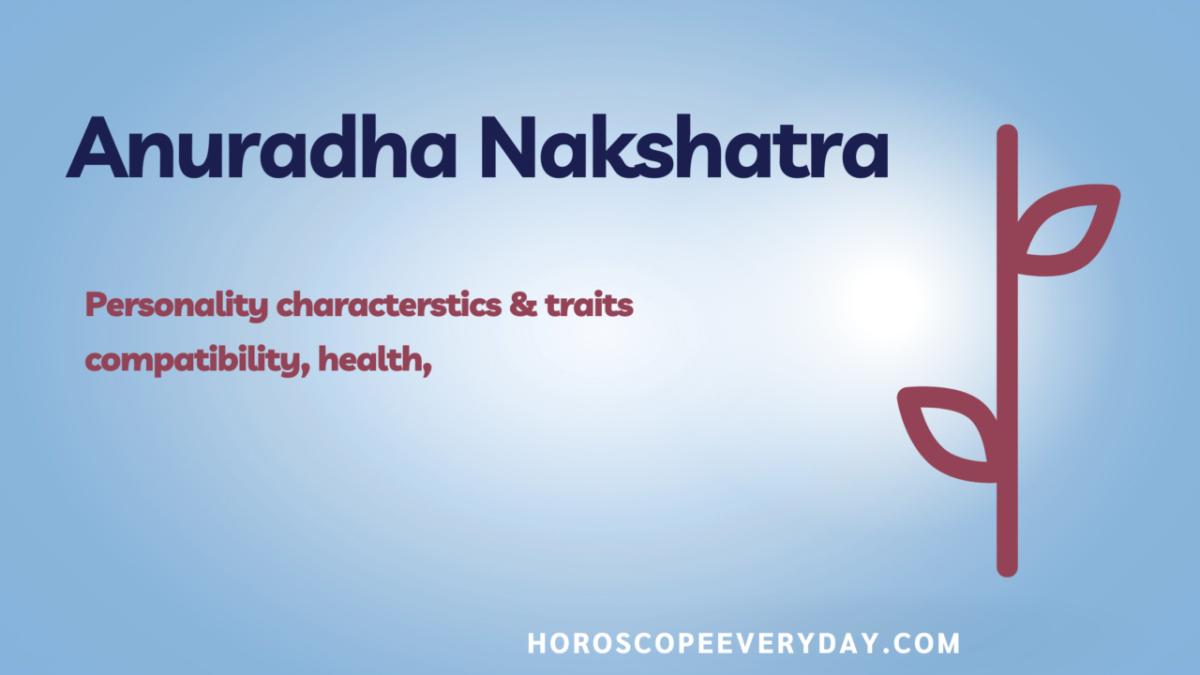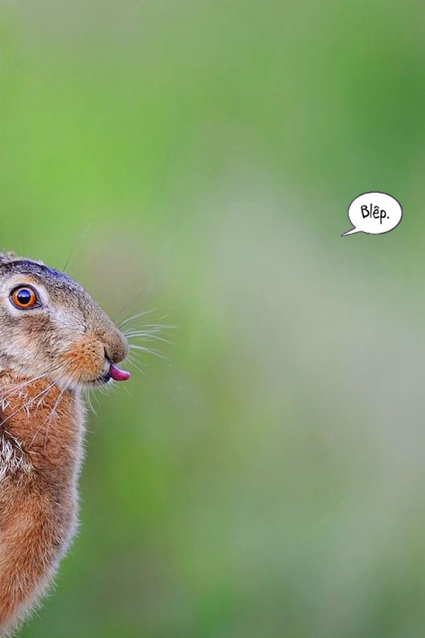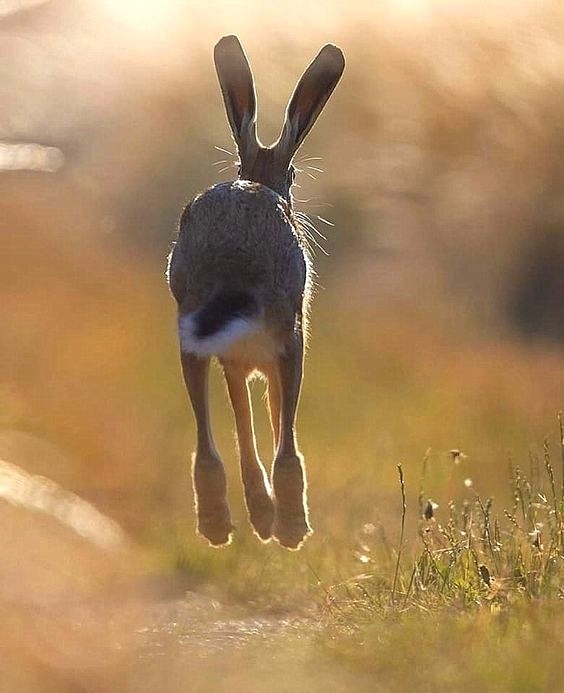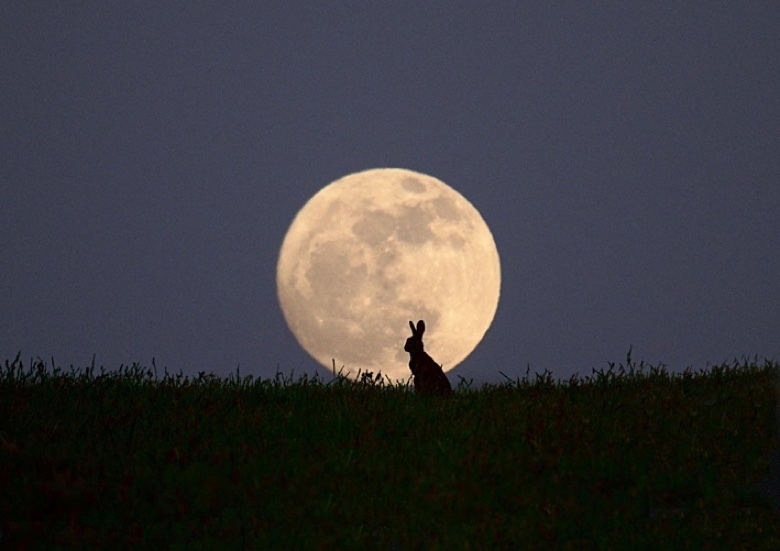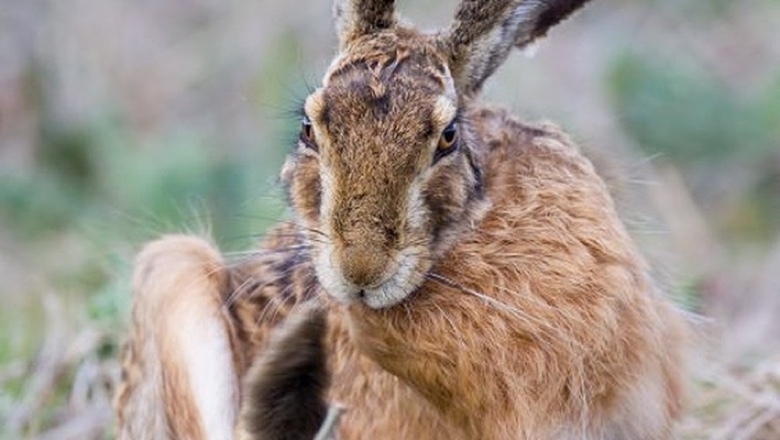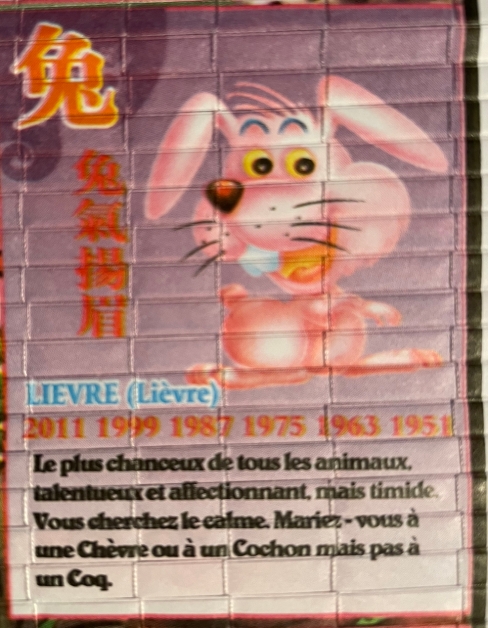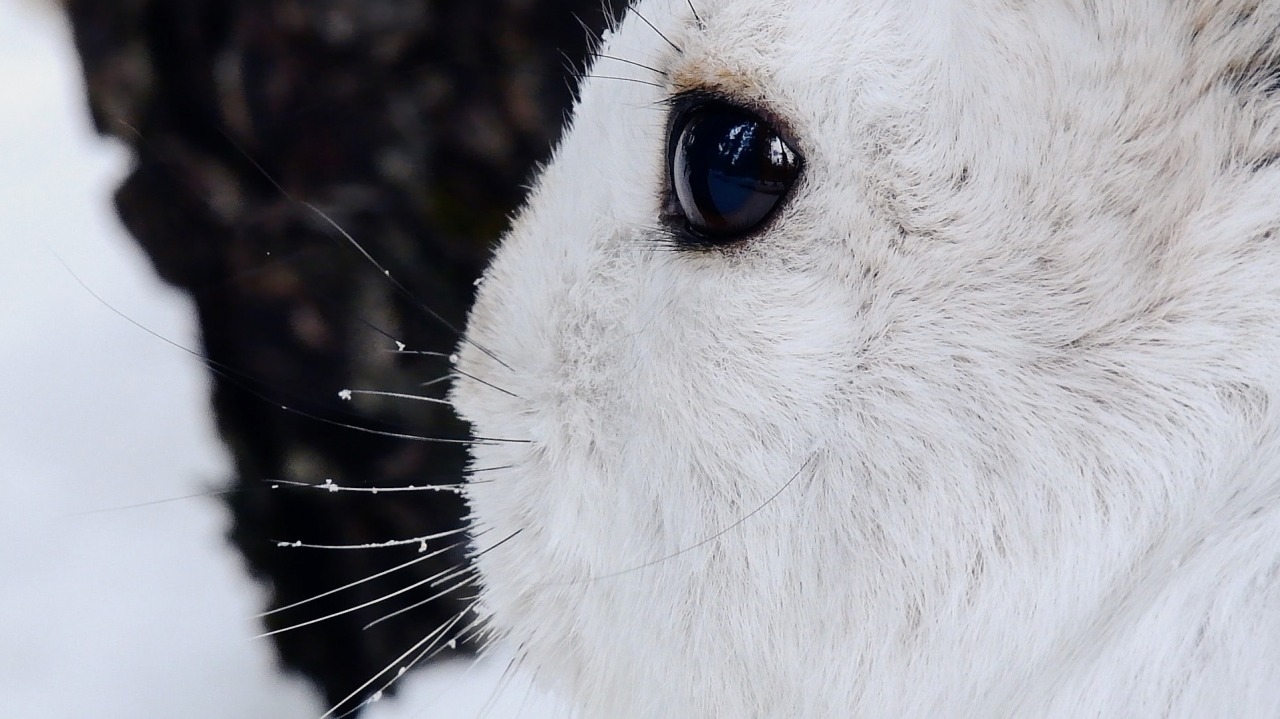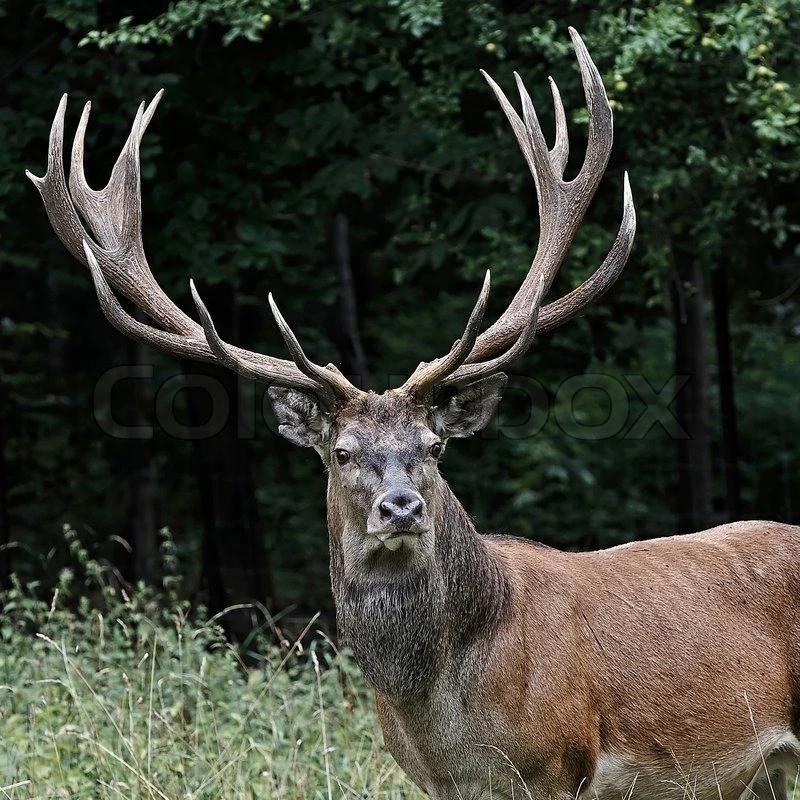#JYESTHA #NAKSHATRA
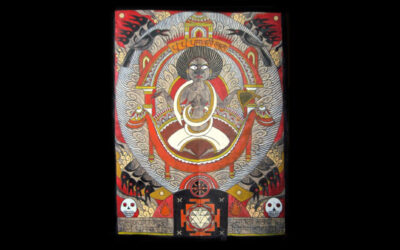
Jyestha Nakshatra is the elder star sister. The word Jyestha derives from ‘Jye’, which means ‘the eldest and the most powerful’. Of all the 27 star sisters who are the Nakshatras, Jyestha is the #eldest.
The main #star of this Nakshatra is the brightest central star of Scorpio, which is known as #Antaris.
This is the heart of the scorpion. It is a star emits the infrared frequency and appears slightly red in the night sky and most visible in spring, it is particularly visible at the end of May, when it is opposite to the Sun.
The ancient star-gazers of China envisaged Antaris in the constellation of the #Dragon, and referred to Antaris as the fiery star, on account of its red glow.
The Name Antaris, comes from Latin and means ‘not Mars’, or ‘anti-Mars’. The planet Mars comes close to Antaris in periodic cycle, every two years. They both share the red colour but Antaris is not-Mars.
Jyestha Nakshatra is the heart of the Scorpion. This fits very well to the energy of this Nakshatra as we shall see. The Scorpion is a mysterious creature of mystical and frightening fascination, unique in that it carries its sting in the end of its tail.
The scorpion is a symbol of dark toxicity and alchemical and occult secrets. Just like the star of elder wisdom that is Jyestha, scorpions are believed to be one of the oldest land animals. Fossils have come to verify this. Very fitting that Jyestha means ‘the eldest’.
We see the principles of alchemy at play in the scorpion, when we consider that scorpions are nocturnal creatures that gather energy from the Moon. Scientists have postulated and found that the whole body of the scorpion is one big eye, with which it is able to navigate in the deep dark after having stored up visual power through absorbing lunar rays. They appear startlingly bright under ultraviolet light, and they grow in their night-vision by the lunar energy they absorb.
The middle finger is considered the eldest finger by Tantrics. It is generally the longest and most developed finger, hence it being the Jyestha finger.
In the astro cosmology of the Yogins, the 27 Nakshatras married the Moon, but they felt a sense of injustice when the Moon’s attention was not shared equally with all of them, but given more to Rohini.
Jyestha, the eldest amongst the celestial sisters, was the one who suffered extreme jealousy at the injustice and ended up complaining about the unfairness of the Moon. This caused the Moon to be cursed to a life of waning away. Jyestha came to regret this curse that her sting had initiated against her beloved. The Moon was saved as the curse was mitigated. The Moon did not fully overcome the curse however, and so thereafter had to undergo the cycles of waxing and waning.
Jyestha Nakshatra is opposite to Rohin. They are literally at opposite poles of the zodiac. They are opposites in many ways. Jyestha is an old wise crone of a woman with the potential for a competitive and bitter scheming nature, whereas Rohini is possessed of sweet innocence and creative fertility.
One sister has the fresh outlook of youth and a spontaneous wisdom that is not burdened by time and experience. The other sister has the weight of experience and the weathered experience of years weighing heavy upon her back.
That Jyestha is opposite to Rohini in the sky is of much consequence when understanding the energy of Jyestha Nakshatra.
The elder Jyestha watches the young sister carefully, and the elder can become bitter when she feels that the experience and wisdom that she has earned with age is disregarded.
This brings us to the lesson of Jyestha. This Nakshatra is connected to the wish to prove ourselves, and is prone to paranoia and jealousy. Jyestha Nakshatra rouses our unresolved themes connected to competition, paranoia and jealousy.
Working with Jyestha brings us the ability to gain the vision of our inner conflicts and battles. Jyestha brings these inner battles and conflicts out of us and into the field of our manifest lives.
Our inner conflicts and battles are what make up our scorpionic sting, and they also the cause of us ourselves the receiving the sting.
The scorpionic sting within us can backfire upon ourselves. But by cutting off our sting, we kill the ancient potential of the scorpion. By cutting off the sting and smoothing over it with niceties we risk becoming old and bitter.
Suppressing or denying
the sting in the tail of the scorpion
causes an internal poisoning
that manifests in bitterness of the Heart.
The sting is a danger, yes. Its free expression depletes us and wreaks havoc. Handling potentially dangerous power is the wisdom of the elder. Wisdom is denied, if the sting is denied. Fighting the sting, or sugar-coating it, is an insidious form of denial.
By knowing how and where and to apply our agonies we can turn them to the profoundly of time-honoured power and artistry within our lives.
The agonies of the spirit hold great potential, if they are handled with care. They have the potential for both creativity and destruction.
The sting in the tail of the scorpion is a formidable force. On the one hand, its untamed expression leads to destructive results, and on the other hand, restraining, denying, destroying or seeking to blanket over the sting within us also leads to destruction.
Harnessing and working with the power of the sting within us, without wishing to destroy it or deny it, ‘is’ the great elder potential wisdom of Jyestha.
Locating our sting is the first part in the steps to the wisdom of Jyestha. Identifying which stings we hurt ourselves or others with, is a path of discovering our karmic essence.
What is behind our tendencies, becomes revealed as we investigate our sting. This leads us deeper into the wisdom of the elder that is known as Jyestha.
Jyestha is the queen. We come to our royal power through her initiation. The initiation of Jyestha is about coming to our real size. By neither downsizing, or over sizing our capacities and authentic expressions, we take a seat upon the royal throne of our true power.
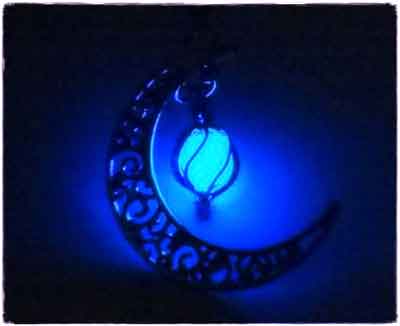
The Talisman is the symbol of Jyestha Nakshatra, along with earrings and an umbrella. There are several relevant stories that relate to Jyestha that hi-light this. Here we shall look at one, or perhaps two, of them.
The sacred amulet has been prized across cultures. Sometimes the lucky charm is an object that is found, or it can be something that is prepared through ritual empowerment.
Healers the world over have prized these objects of power, and have used them as tools for healing, protection or blessing.
Amulets have the ability to ritualistically focus the mind and awaken power. Awakening or having power is one thing, but the ability to hold power and harness it wisely is another thing altogether. The stories that relate to the Talismans of Jyestha stress this point very much.
Amongst Tantrics, objects of power are given as indicators of initiation, sometimes they are handed on and earned. The belief that an object can be imbued with power spans the world over. Within Tantra there are many detailed and sometimes complex formulas for imbuing objects with power with energies, so that they can serve as healing instruments and objects of power.
It takes time and wisdom to imbue something with power, and is no overnight thing. In the same way it takes time and dedication to earn and learn a skill, so it is with the amulet.
This is the meaning behind it being the symbol of the elder Star Jyestha. Like the wisdom of this Star, an amulet is a time honoured thing.
In the circles of Tantra the secrets aren’t given easily. They can’t be claimed or bought, but are to be earned and gradually received through slow-time honoured application.
In the Mahabharata epic, there is a story that tells of the protective earrings and armour that belonged to a warrior named Karna. Karna was the child of Surya (the sun) and inherited the armour and earrings that made him invincible from his solar father.
Indra took the earrings and Kavach (protective talismanic armour) away from him.
It is important to remember that the main protagonist on the battlefield in the Mahabharata is Arjuna, who is the son of Indra.
Whether Indra was protecting his son, protecting his own throne, or had other reasons for taking the protective armour and earrings, is a worthy subject of study and meditation.
The Mahabharata is all about the strategies of spiritual life and psychic warfare. It takes much spiritual strategy to grasp the deeper meanings of the codes inscribed in the Mahabharata. The deciphering of its wisdom is earned with time-honoured contemplation, study and introspection.
We see one example of the protective talisman here in relation to the Indra. Indra is the king of the Devas and the ruling deity of Jyestha Nakshatra.
Another story tells of the robbery of the earrings of Indra’s mother Aditi, by an Asura named Narak. Again the earrings were a powerful protective talisman that in this instance enhanced clairaudience.
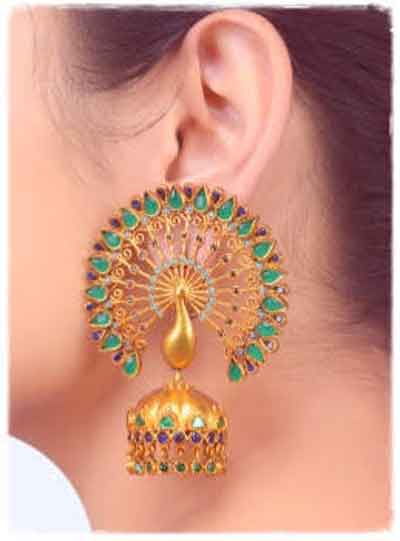
A contemporary take on the umbrella-shaped Jumka earring
Let’s look at a story that tells of Indra and a protective umbrella. Indra owned an umbrella that was, like his mother’s earrings, also stolen by the Asura Narak. But in this story we are dealing with a different umbrella.
Once upon a time the farmers were preparing a mass ritual with many offering to Indra. Indra is a thunder god who also controls the rain.
The ancients were in the habit of giving spiritual offerings to the deities who stood behind the expression of natural phenomena. The farmers depended upon the rains and so they gathered in ritual, to give power to the god who controlled the rains.
Krishna is known as the cosmic trickster, who managed to convince the farmers that their offerings were a waste. He asked them rather to feed cows and each other with the ritual offerings. Krishna told the people to forget these old customs of offering honour to the gods. The farmers feared that by not honouring the gods with offerings the gods would be malnourished and start to demand things and retaliate in unfavourable ways.
Krishna laughed it all off, and his laughter was so contagious, that the people went along with him. And so the animals and people enjoyed the feast and offerings that were meant for Indra.
Meanwhile, Indra did not receive his expected offerings of energy and devotion, and so he decided to look into the matter. Needless to say, he was furious when he saw the farmers making merry, not only withholding their offerings, but enjoying them themselves. Incense was burning and feasts were distributed all amongst themselves and the cows.
Indra grew jealous of the young child Krishna. This young child who thinks that he can upset the cosmic order enticed Indra’s wrath.
Indra mounted his elephant, Airavata the storm elephant, and together they charged the skies. Airavata can expel water from his truck at the speed of light, and has the power of storm clouds in his flight. He usually guards the doorway to Indra’s paradise and has many tusks and trunks. So, in a fit of vengeful rage, Indra rode wildly upon Airavata and together they let loose thunderbolts and torrents of rain.
The Samvartak, as it is called, is the mighty storm weapon of Indra. It releases thunderous roars of electric and ice. Indra did not hesitate in his intention to destroy child, woman, man and cow, along with many other creatures. Indra in his frenzy, he sought to punish them for consuming and enjoying the offerings that he believed were rightfully his.
The villagers feared drowning and death by lightening. Krishna continued to laugh through it all, and lifted the sacred mountain Govardhan upon the fingers of his left hand, creating an umbrella for the farmers and creatures to be safe. Indra applied the full force or storm for 7 days and 7 nights.
The Govardhan mountain is the mountain of the cows that is sacred to Krishna.
‘Go’ refers to cows and ‘Vardhan’ means ‘that which nourishes’. Krishna is the keeper of cows, who are the symbol of motherhood and nourishment. Krishna himself means the dark one. He is the cosmic trickster who poses unfathomable riddles to the mind and captures the heart.
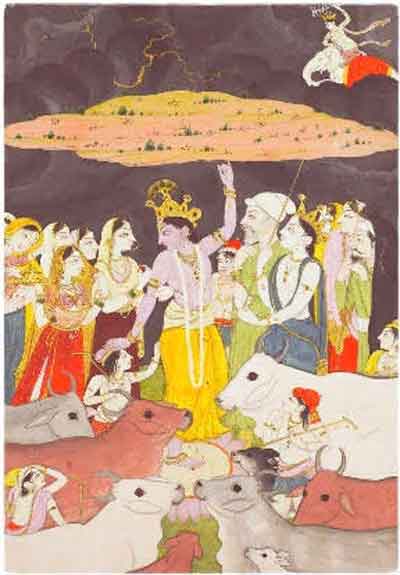
When #Indra could not prevail he realised that the young boy was no ordinary child, but an incarnation of Vishnu the preserver. Indra accepted defeat and offered Krishna a divine cow and gained pardon for his cruel, overactive and unjust behaviour .
This story of the protective mountainous wielded by Krishna, highlights the themes of Jyestha very well. The talismanic-mountainous-umbrella saved the people with the real matured and elder wisdom of Jyestha Nakshatra. The behaviour of Indra, the god of Jyestha, on the other hand, fell into the rags of jealousy and conceit. But Indra did realise that he had erred and bowed low and learned a lesson by shamefully taking account that it was no way for an elder king to act.
Jyestha is invested with power. It’s power can selfishly initiate drama and suffering, or it can be a wise protective beneficent force, as the story shows.
Indra is the King of the Devas who is given to enjoying the luxuries of his realm of Paradise. He likes to consume and become intoxicated on large amounts of Soma. Already as a child, he was stealing supplies of it to quench his thirst. Indra encapsulates the haughty narcissistic power drive of Jyestha Nakshatra.
Like Jyestha Indra has power, but it can be executed with a sting, as illustrated by the story just told.
Indra means ‘ruler’, ‘leader’, ‘someone with power’, all of which he is. On top of this, Indra is handsome with a golden shine to his skin.
He will stoop to very underhanded means to get what he wants. Once he desired the wife of a great yogi, and shape-shifted to resemble the yogi and had his way, but he brought a curse upon himself. Another time Indra was too busy enjoying merriment and Soma drinking that he ignored his Guru and lost his blessings, after which Indra fought ruin on himself and had to undergo terrible ordeals to set things right.
Indra represents the soul who grows through his mistakes. He makes many mistakes that cause great suffering to himself and others, but he bares the consequences and grows wise in the predicaments and burdens of the consequences that life exacts from him.
Sometimes it seems that Indra never learns and is just too full of his own power and royal standing. The dangers of Jyestha are revealed by his star. With power comes danger. Having the upper hand and the sting of the scorpion on one’s side can corrupt. The deepest lesson of Jyestha Nakshatra is to hold power wisely without brandishing it proudly and without unnecessary display. Power is lost, if it is not kept wisely.
Arohan Shakti is the power of Jyestha, this is the power of conquest, dominance, leadership and the King. This power comes from the solar-plexus Chakra. Power imbalances and struggles can show themselves in the solar plexus that is not in balance. Learning about handling power is the balancing of the solar-plexus Chakra.
The power and integrity of the royal overseer is the ability to articulate between the realms, and have awareness of the predicaments of his subjects.
Indra’s Nakshatra is ruled by Mercury and this presents an important point.
Mercury is the only planet that is friendly to the planetary adversaries that are Saturn and Mars.
Indra has the power to bridge opposites, he literally is a bridge between these opposite energies. His apparently ambivalent nature, that articulates between the dark and light themes of Saturn and the Sun are explicit in the stories that deal with Indra and his exploits. Indra is sometimes a brutal punisher like Saturn. He is as magnanimous as the Sun, and lives the extremes, often to the detriment of himself and others. He is a candidate undergoing the initiation of Jyestha himself.
Indra’s Nakshatra is in the midpoint between water and fire. This is known as the Nakshatra Gandanta point in the zodiac. Ganda implies a knot and Anta is the end. The Gandanta points are the junctions between the opposing forces of water and fire. They represent the coming to the very ends of karmic lessons.
Water and fire create steam. Indra rouses much steam in his wake and is in fact the controller of the clouds.
Gandanta points are powerful stations where Karmic knots can potentially unfold the themes that keep the second and third Chakra separated.
This Gandanta point represents the point between the water ruled sexual Chakra and the fire ruled solar plexus Chakra.
One relevant story of Indra hilighting this junction tells of him overcoming the giant serpent Vritrasura. This was one of Indra’s greatest conquests.
After Indra beheaded his Asuric Guru, the father of the decapitated son, enacted revenge by summoning Vritrasura.
Vritrasura was a giant serpent that brought drought by holding the waters of creation in his giant belly. The battle between Indra and Vritrasura went on for a whole year and in the end he swallowed Indra whole. The place where Indra broke free from Vritrasura was in the belly, between the watery and fiery Chakra. The serpent died as Indra broke free of his oppression. Indra overcoming the serpent represents his initiation of opening the Karmic Gandanta knot between the two Chakra’s.
This principle of bringing adversaries together is also visible in the relation between the opposite Nakshatras of Jyestha and Rohini, which are at opposite poles of the sky. Rohini is in the most auspicious yielding fertile side of the zodiac. Whereas Jyestha is in the inauspicious part of the zodiac that is concerned with power, conquest and dominance.
One star is Aldebaran, the red star, in the eye of the Taurean bull (Rohini), and the other is the red star Antares, on the opposite side, in the heart of the constellation of Scorpio (Jyestha). Both are giant red stars, with one pole representing the elixir of life, and the other representing the poison. Rohini represents the teachings of Lakshimi, and Jyestha represents the teachings of Alakshmi.
Rohini represents the Devas
& Jyestha represents the Asuras.
We see that Indra had many dealings with the Asuras. After he managed to offend his Guru and lost his sacred protection, he even hired the servers of an new Asuric Guru to help him maintain his Paradisal realm.
On each side of this zodiacal belt, these star poles walk together on the path of wisdom. Each star has its own lessons, along with its pitfalls and potentials, as we shall see in the next section.
The #hare is the #animal of Jyestha Nakshatra. Tantrics consider the hare an elder creature with the wisdom of years behind it. The hare is nocturnal and unlike a rabbit doesn’t care for the protection of the social burrow.
Hares come out in spring. The saying ‘Mad as a March Hare’ highlights their behaviour at the height of their breeding time in the month of March.
Although they breed for half of the year, the month of the spring equinox is the time when they are most active in daylight hours. Almost as if they come to actively meet the beginning of the waxing year. They undergo some quite extraordinary mating rites that reflect the nature of Jyestha Nakshatra.
The female hares will test the male to the extreme buy running him to the point of exhaustion. Hares can reach speeds of 80 km/h. They then will fight in the famous boxing manner that they are known for to further test the power and endurance of the male.
Jyestha Nakshatra is the old formidable crone that tests how far we have come in terms of wisdom. Jyestha is a feminine energy that cares to raise our potential and, just like a female hare, will test us by exposing our weak-points on our march through life.
Easter and its association with the Hare, or Easter bunny, becomes clear in this light of the rising light that the spring equinox brings.
The hare has a highly solitary nature just just like Jyestha Nakshatra. When Jyestha is in orbit, the energy of introspection is beamed to us on earth. This is the introspective scrying over the past and gaining insight into the nature of the soul wandering through the fabric of times many weavings. The statements made by our life experiences can come to define us, for better or for worse. The wisdom of the crone is the ability to unstitch the soul from the fabric of experiences that it is woven within. Freedom exists in studying the defining stitches that keep repeating and weaving ever onwards into the tapestry of our life.
If we find we are repeating cycles over and over and over, then we are crossing a habitual stitch and freedom is but a fancy word.
The hare is one of the few animals born with eyes wide open. It is literally born as an elder and very fittingly so, for it is the assigned creature of the elder Nakshatra of Jyestha.
The hare is a creature that is born mature. It has minimal support from its mother and can even manage – if left on its own – very soon after birth.
Most creatures require a period of days or even weeks to even open their eyes and start to move effectively on their own. But the Hare is ready to jump shortly after its birth, with vision already developed.
The eye is central to Indra the ruling deity of Jyestha. Indra is covered in eyes and has a hyper awareness that watches carefully from all directions for opponents to his throne.
The hare also shares a connection to Indra through its sexuality. The hare has often been taken as a symbol for sexuality and fertility.
The hare reaches sexual maturity very soon in life and has a prolonged mating season that lasts half the year. Science has come to discover that the female hare has two synchronised ovarian cycles which gives it the ability to become pregnant while already pregnant.
The hare was connected by the ancient Greeks to the goddess Aphrodite, on account of its sexual and fertile nature.
Indra too is known for his legendary sexual conquests that were the cause of him being cursed to have his reproductive organ fall off and his body to be covered in a thousand Yonis.
The story tells us that he fled into hiding until the curse was mitigated by celestial intervention. He was given the reproductive organ of a ram and, into each of the Yonis, was put an eyeball, with which he could watch potential opponents from all sides.
THE GENERATIONAL CURSE
Stirring Cyclones of Time
Jyestha Nakshatra illuminates the wisdom that we carry in the deep recesses of the Soul. Its wisdom is not of an abstract metaphysical kind. Rather, it is the kind of down to the bone type of wisdom, based on the lessons we have really learned through experience.
Age and time does not indicate that we have actually learned the lessons that destiny puts on our path. Sometimes we may even grow blind with time. Indeed, we might do well to take the introverted gaze of Jyestha and look back upon the cycles of time.
Are we repeating the same cycles as we did in previous years?
Sometimes the format might be different but the cycle is the same. This is how the generational curse gets passed down the line. The old saying that ‘the sins of the ancestors are visited upon the young’ is a very apt phrase for Jyestha. She is the old woman who holds the key to breaking or making the generational curse.
Elders have a big spiritual task in the Tantric tradition. As they grow closer to the spirit world and come to learn the lessons of destiny, they can potentially unlock astral doorways and energies that the next generation can benefit from. If they don’t resolve the cycles of what destiny is repeatingly showing them, then they don’t open the astral doorways and may even put more locks in place for those in their line.
The question here becomes: what are you repeating? Are you following the same pattern and rhythm as you were in past cycles? Jyestha is an energy that can’t be tricked. She is an ancient beady-eyed old hag who has her eye on all the tricks and strategies of the trade. She sees all the routes that we take to avoid facing wisdom. Jyestha is so old, that running is no longer an option. She tells us that sometimes the form might change but the energy has not been resolved. She asks us what are we brewing up and handing on?
An example of this would be that we step out of a life of riotous living fuelled perhaps by drink and drugs and destructive relationships, and step into a healthier path of spirituality and herbal tonics. We might have really resolved the form but not the underlying energy. If the energy of drama and ungrounded hysteria still informs our life, then the form has been changed but the heart still beats the same old tune.
When the destructive pattern and rhythm of past cycles is not resolved, then cycles turn into cyclones that keep us spinning in the same old!
THE TALE OF THE WHITE HARE
Sweet and Bitter
The old English folktale of the White Hare, very interestingly encapsulates some of the key principles of Jyestha Nakshatra. We have seen how Jyestha shares a jealous and vengeful relationship with her opposite, Rohini.
Jyestha is the old white haired women, rich with the wisdom of the years upon her. She can have a tendency to become bitter and vengeful, if she feels she is not honoured.
Rohini, at the opposite pole in the sky, is the young maiden, red with life and blood, being innocently fresh and inexperienced is her charm.
In order to grasp the lessons of these Star sisters they must be considered and taken together, their opposites teach us of each and the other.
The old folktale of the White Hare ties together the opposites, reflected in the principles of ripe innocent maidenhood turned sour with intrigue and embittered experience. This here attempted retelling of the story seems rather fitting in this context.
Once upon a time there was a young maiden. She was rosy cheeked with crimson lips. Her eyes were like fresh sparkling pools of blue topaz and she wore a woven magenta cape that had been handed down for generations through the line of wise women behind her.
Her cape was a blessing for it had been stitched and repaired by many a wise hand and held intact, never had the hands behind her allowed it to fray or wither, even across generations.
This young maiden was body, heart and soul in love with a local boy. Together they frolicked through grassy pastures under many shades of sky.
They would sit silent together, drinking the juice of fermented apples by the river, and watch the March hares play their games, and then fall asleep together under the azure sky of fresh spring nights.
Their love was pure, their love was sworn,
But sometimes good things get ravaged and torn
Gone was her love on the morn
Leaving her broken heart to tragic to mourn
She learned that he had run away
with another girl astray
and gone to seek his fortune elsewhere.
How did he dare, how did he dare!
Betrayed, abandoned and forlorn
With time she took a look of scorn
In bitter hours she passed many a day
Her mantle soon began to fray
She didn’t care to stitch its wounds
And met her death in misery doomed.
Her bitter spirit once so sweet would not rest, and she hunted him down. She would appear to him first in troubled dreams as a white Hare, reminding him of the last nights they spent on the cool nights of Mach at the riverbank, reminding him that to forsake love is a destiny that leads to destruction.
The young man had grown worldly wise and forgotten about his past in the present wheelings and dealings of daily affairs.
Yet he was haunted by an eerie feeling that something had been left behind, or had been forgotten. Try as he might, he just could not recall what it was.
Each time he would have these reveries that something was amiss, the white hare would appear out of nowhere and cause a stroke of bad luck.
Sometimes a horse would run away, or some other incident of ill luck would follow. What was even more peculiar was that no one else seemed to see the white hare but he, they joked that he had probably seen a ghost.
The tragedies that came with the sighting of the white hare got more and more extreme, the ruin of his livelihood was soon followed by a bad accident, and then the death of his now beloved.
He became more and more paranoid, unstable and fearful of mind as he sank into an abject shadow of his former self.
One winter morning as the sky carved upon itself and covered the land with snow, he was found mangled in a frozen pool of crimson blood.
As crimson as the lips of the love he had once cruelly forsaken.
The local folk were confused when they saw that the footprints of his runaway horse were followed by those of a hare.
The wise amongst the townsfolk knew what it had meant all along and right unto the end.
https://www.ancient-tantra.com/jyestha-nakshatra/




